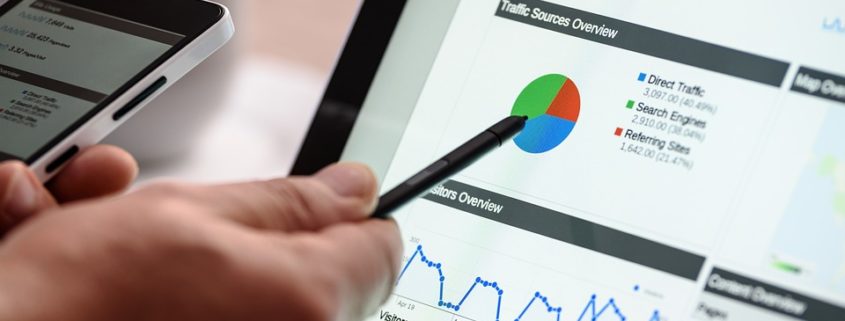Google Analytics – Where To Start?
Last week, TLC Business hosted a marketing seminar on the ‘Top Ten Tools to Effective SME Marketing’, with topics including, CRM systems, video and email marketing. Over the next few months, we will be exploring these topics further, providing you with top tips to help you get more out of your marketing.
First stop…Google Analytics
Google Analytics is one of the most powerful tools out there for marketers. It is invaluable for monitoring and analysing traffic on your website, allowing you to evaluate both on and offline marketing campaigns. It gives you an enormous amount of information about who is visiting your site, how they got there, and what they are looking for.
We are always surprised by the number of businesses who do not actively review their Google Analytics reports. Yes, the volume of results available can be daunting; however, the importance of the information stored is critical for any business.
So what information should my business be measuring?
Let’s start with the basics:
- No. visitors – How many people visit your website in a day, month and year? Are there any trends that appear…quieter in August but a peak in September?
- Bounce rate -The lower the better. Are people looking around your website or simply jumping off after the homepage? Has a particular page got a higher bounce rate than others?
- Length of time on site – How long is a visitor spending on your website before leaving? 10 seconds or 2 minutes? Does a particular page retain visitors for longer?
- How many pages visited – Are the majority of people visiting one page on the website, or exploring multiple, for example, ‘news’, ‘services’ and ‘contact us’?
- Traffic – Are visitors coming from a direct source or referral links?
- Keywords – Which keywords are pulling in traffic to your website?
Google Analytics doesn’t just stop there; explore your site in more detail:
- Visitor flow -This graphically represents the pathway visitors take through your site, from the source, the various pages viewed and where along their paths they exited your site.
- Form Field Tracking – Filling out forms online is well known, not only for tracking conversions but also for losing visitors. You can use the Google Analytics tracking feature to improve your conversion rate by analysing and optimising the form to make the process easier and more efficient.
- Page load speed – The report provides an at-a-glance view of essential information. Which landing pages are slowest? Which campaigns correspond to faster page loads overall?
- In-Page Analytics – This enables you to visually analyse your website pages in order to assess how users interact with your website and understand the following questions, are my users seeing the content I want them to see? Which links are users clicking?
- Social Visitors Flow – A visual presentation of how visitors from social platforms are navigating your website. Assuming the goal of your social media campaign is to get more traffic to your website, this report provides you with insight into which social sites are sending the most traffic to your website and what your social visitors are doing once they get there.
The information above may be overwhelming; however, using Google Analytics to measure the performance of your website can reveal useful insights into the effectiveness of the content and layout of your site. Advanced areas within Google Analytics provide you with a vital tool to help you understand and breakdown those larger numbers and daunting information into smaller, more meaningful numbers.
To provide you with even more insights into using website analytics more effectively, our next blog will look at the latest social media developments within Google Analytics and how this can help you successfully drive traffic to your website.
Stay tuned!












Leave a Reply
Want to join the discussion?Feel free to contribute!